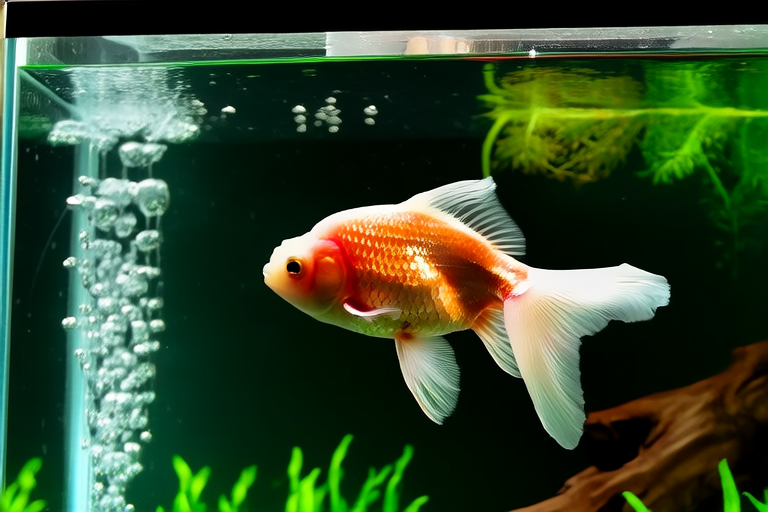From Bowl to Tank: The Ultimate Goldfish Upgrade Guide
Welcome to the world of goldfish keeping! Whether you’re a first-time aquarist or an experienced fishkeeper looking to expand your aquatic horizons, this guide will help you transition your beloved goldfish from a small bowl to a spacious aquarium. Upgrading your goldfish’s living space isn’t just about giving them more room; it’s about providing a healthier, more vibrant environment that allows your fish to thrive. Let’s dive into why upgrading matters and how to create the perfect tank setup.
The Benefits of Upgrading from Bowl to Tank
Goldfish are active swimmers that require ample space to move around freely. A bowl, no matter how charming, simply can’t provide the necessary conditions for a goldfish to live a long and healthy life. Here are some key reasons why upgrading to a tank is beneficial:
- Space to Swim: Goldfish need plenty of room to swim, explore, and exercise. In a tank, they can engage in natural behaviors like swimming up and down and side to side.
- Better Oxygen Levels: Bowls have limited surface area for oxygen exchange, leading to low oxygen levels. Tanks offer larger surface areas and better water circulation, ensuring your goldfish gets the oxygen it needs.
- Improved Water Quality: Larger tanks allow for better water quality management, reducing the frequency of water changes and the risk of harmful toxins.
- Mental Stimulation: A well-decorated tank provides hiding spots, plants, and other features that keep your goldfish mentally stimulated.
Essential Tank Setup Details
Setting up your new tank properly is crucial for your goldfish’s health. Here’s what you need to consider:
Tank Size
For one goldfish, a minimum tank size of 20 gallons is recommended. For each additional goldfish, add another 10 gallons. This ensures there’s enough space for your fish to swim comfortably without overcrowding.
Filtration System
A high-quality filtration system is essential for maintaining clean water. Look for filters that provide mechanical, biological, and chemical filtration. Mechanical filtration removes debris, biological filtration supports beneficial bacteria, and chemical filtration helps remove toxins.
Heating and Temperature Control
Goldfish are coldwater fish, so they don’t require a heater. However, maintaining a stable temperature between 68°F and 74°F (20°C to 23°C) is important. Use a thermometer to monitor the water temperature and ensure it remains consistent.
Substrate and Decorations
Choose a substrate that is easy to clean, such as gravel or sand. Avoid sharp objects that could injure your fish. Decorations like caves, plants, and driftwood add aesthetic value and provide hiding spots for your goldfish.
Proper Filtration
Filtration is one of the most critical aspects of any aquarium setup. It not only keeps the water clean but also maintains the right balance of beneficial bacteria. Here’s how to set up and maintain a filtration system:
- Regular Cleaning: Clean the filter media every two weeks to prevent clogging while preserving beneficial bacteria.
- Biological Filtration: Ensure your filter supports a robust colony of beneficial bacteria that break down harmful ammonia and nitrites.
- Chemical Filtration: Use activated carbon to absorb impurities and maintain crystal-clear water.
Lighting
Proper lighting not only enhances the beauty of your tank but also supports the growth of any live plants you might include. Choose a light fixture that provides at least 2 watts per gallon. Remember to give your fish a daily cycle of 8 to 10 hours of light followed by darkness for their rest.
Temperature Control
While goldfish are coldwater fish, maintaining a consistent temperature is still vital. Sudden temperature fluctuations can stress your fish, making them more susceptible to diseases. Invest in a reliable thermometer and check the temperature regularly.
Ideal Tank Mates
Choosing the right tank mates for your goldfish is crucial. Goldfish are social creatures and enjoy the company of others. However, not all fish are compatible with goldfish. Here are some suitable tank mates:
- Rabbit Snails: These peaceful snails are great for keeping algae under control.
- Guppies: Small, colorful guppies can add a splash of color to your tank without competing for food.
- Corydoras Catfish: Bottom-dwelling catfish are gentle scavengers that help keep the tank clean.
Avoid aggressive or fin-nipping fish like tiger barbs and bettas, as they can harm your goldfish.
Diet Changes
Goldfish have hearty appetites and require a balanced diet to stay healthy. In a tank, you can introduce variety to their diet. Offer a mix of commercial goldfish pellets, flakes, and occasional treats like frozen brine shrimp or bloodworms. Be cautious not to overfeed, as excess food can pollute the water.
Regular Maintenance Tips
Regular maintenance is key to keeping your goldfish healthy and happy. Here are some tips:
- Water Changes: Perform partial water changes (about 25% of the tank volume) weekly to remove toxins and replenish minerals.
- Check for Algae Growth: Regularly inspect the tank for signs of algae growth and address it promptly.
- Monitor Equipment: Check that all equipment, including heaters and filters, is functioning correctly.
Common Mistakes to Avoid
Even experienced aquarists can make mistakes. Here are some common pitfalls to avoid:
- Overcrowding: Provide adequate space for each fish to swim comfortably.
- Inadequate Filtration: Ensure your filtration system is appropriate for the size of your tank.
- Improper Feeding: Feed your goldfish the right amount of food to avoid overfeeding.
Conclusion
Upgrading your goldfish from a bowl to a tank is a rewarding decision that will enhance your fish’s quality of life. By following the guidelines outlined in this guide, you’ll create a thriving environment where your goldfish can grow, play, and live happily. Remember, the journey doesn’t end once the tank is set up; ongoing care and attention are essential for your fish’s well-being. Happy fishkeeping!
